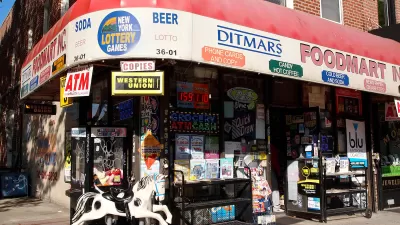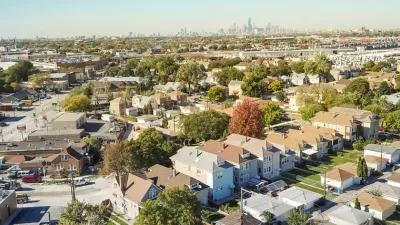Speculation about property values is as old as the U.S. itself, but it used to be much more localized, explains Robert Shiller, Yale economist. Is the recent housing roller coaster likely to repeat itself in the future?
Robert Shiller explains that, while housing bubbles are a product of recent history, beginning after WWII, speculation about land values is as old as the U.S. Even George Washington had been a surveyor and founder of a subdividing company before becoming president.
Shiller explains that "land fever" arose when a promoter heavily subdivided a plot and generated "buzz" around it. Not until the 1920s did the media catch on and report on the sheer aggrandizement associated with such schemes: In Florida, for instance, jungle and swamp land was being sold to unsuspecting newcomers as perfectly buildable.
He goes on to describe how the misconception of land finitude has driven up housing prices, and may have led many to miscalculate the return on their investments in recent crises.
While housing is certainly tied to land, it is generally the structure itself that determines its worth in the vast swath of developments in the U.S. outside of densely populated areas. Interest rates and inflation also drive the housing market, and the likelihood of a rise in both make this "an auspicious time to buy a house with a fixed-rate mortgage," he argues.
FULL STORY: Before housing bubbles, there was land fever

Study: Maui’s Plan to Convert Vacation Rentals to Long-Term Housing Could Cause Nearly $1 Billion Economic Loss
The plan would reduce visitor accommodation by 25,% resulting in 1,900 jobs lost.

North Texas Transit Leaders Tout Benefits of TOD for Growing Region
At a summit focused on transit-oriented development, policymakers discussed how North Texas’ expanded light rail system can serve as a tool for economic growth.

Why Should We Subsidize Public Transportation?
Many public transit agencies face financial stress due to rising costs, declining fare revenue, and declining subsidies. Transit advocates must provide a strong business case for increasing public transit funding.

Dear Tesla Driver: “It’s not You, It’s Him.”
Amidst a booming bumper sticker industry, one writer offers solace to those asking, “Does this car make me look fascist?”

A Visual Celebration of Manhattan’s Chinatown Elder Community, Through Food
Lanterns, cafeteria trays, and community connection take center stage in this stunning photo essay.

How to Make US Trains Faster
Changes to boarding platforms and a switch to electric trains could improve U.S. passenger rail service without the added cost of high-speed rail.
Urban Design for Planners 1: Software Tools
This six-course series explores essential urban design concepts using open source software and equips planners with the tools they need to participate fully in the urban design process.
Planning for Universal Design
Learn the tools for implementing Universal Design in planning regulations.
City of Santa Clarita
Ascent Environmental
Institute for Housing and Urban Development Studies (IHS)
City of Grandview
Harvard GSD Executive Education
Toledo-Lucas County Plan Commissions
Salt Lake City
NYU Wagner Graduate School of Public Service





























